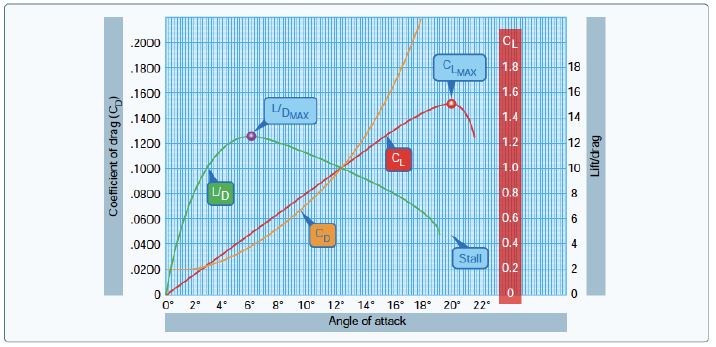Time to really understand Vx, Vy, and Vg
Outline:
Introduction
Purpose: The relationship between Vy (Best Rate of Climb), Vx (Best Angle of Climb), and Vg (Best Glide Speed). These are critical for understanding how to optimize climb and glide performance during various phases of flight, especially when considering environmental factors and aircraft weight.
Audience: Pilots of piston-engine, fixed-wing aircraft, specifically in optimizing climb and glide efficiency
Key Definitions
Best Rate of Climb (Vy): Highlights Vy as the speed that allows for the greatest altitude gain per unit of time. It is used when the goal is to reach cruising altitude quickly.
Best Angle of Climb (Vx): Vx provides the best altitude gain per horizontal distance, a key factor after takeoff when clearing obstacles.
Best Glide Speed (Vg): The best glide speed (Vg) is shown as the airspeed that optimizes the horizontal distance traveled during an engine-out situation.
Aerodynamic Principles
Thrust and Drag Curves: How the total drag, which is a combination of parasite and induced drag, affects climb rates. It illustrates how these curves intersect to influence Vy and Vx.
Power and Performance: The chart demonstrates how the balance between power available and power required influences the optimal climb rate, shown with Vy.
Lift-to-Drag Ratio (L/D): The lift-to-drag ratio curve illustrated helps identify the optimal glide speed, showing how maximizing this ratio leads to better glide performance.

How Parasite Drag and Induced drag determine the L/D max speed. 
Power available vs Power required. 
Lift to Drag Ratio (L/D max) 
How Vy and Vx change with altitude.
Derivation of Speeds
Vy: Derived from the power available vs. power required curve, indicating the optimal rate of climb speed for best altitude gain.
Vx: Vx is shown as the optimal angle of climb, derived from thrust and drag considerations. The chart focuses on how Vx maximizes the aircraft’s altitude gain relative to horizontal distance.
Vg: The best glide speed (Vg) is derived where the L/D ratio is maximized, shown clearly in the chart as the speed that provides the greatest horizontal distance for altitude lost.



Practical Considerations
Environmental Factors: The chart illustrates the effects of wind and environmental conditions on Vy, Vx, and Vg. Wind correction is shown as a key factor in optimizing climb and glide performance.
Aircraft-Specific Variations: Reference to the Pilot’s Operating Handbook (POH) for specific aircraft speeds is integrated into the flow of the chart for better understanding of aircraft-specific requirements.
Emergency Situations: The best glide speed (Vg) during engine-out scenarios, showing how to optimize glide distance and efficiency.
Design Maneuvering Speed (Va)
Purpose: To help pilots understand the significance of design maneuvering speed (Va) for safe operations, particularly in turbulent conditions.
Definition: Va is the maximum speed at which full, abrupt control deflections can be made in one axis, without exceeding structural load limits.
How Va is Determined: Derived using a specific formula, based on the load factor and stall speed at 1g. It is certified during flight testing under FAR Part 23.
Factors Affecting Va:
Weight: Va decreases as the aircraft weight decreases.
Turbulence and Load Factor Sensitivity: Pilots must fly below Va to prevent structural damage during turbulence or high-load maneuvers.
8. Misconceptions About Va
Va does not protect against structural failure from high-speed dives or dynamic instabilities like flutter.
It varies with aircraft weight and should always be referenced from the POH to ensure correct values for specific conditions.
9. Real-World Application
Scenario: Flying in Turbulence: Use Va to prevent structural damage from sudden gusts.
Scenario: Emergency Maneuvering: Use Va as a reference to avoid over-stressing the aircraft during abrupt maneuvers.
Scenario: Weight Reduction: Adjust Va based on reduced fuel or passenger load.
What you can join for free.
Bootcamp+ membership site - All power hours, tribal knowledge videos, and more.
Preview our online course - On Demand
Join our Power Hour live shows - Every Saturday
Join our Newsletter list - At the bottom of the home page - Monthly -
Join our Podcast “Flight Training the Way I See It” - Monthly
Power Hour Outlines from Previous Shows and Resources - On Demand
What we offer for purchase.
7-Day Immersion Class - In person or remote - Every Month - Location Varies
3-Day CFII Class - In person or remote - Every two to three months - Location Varies.
Custom Training Products - Lesson Plans, Flow charts, FOI Roadmaps, etc.
Bootcamp+ membership site - All power hours, tribal knowledge videos, and more.
Remote ground instruction - Send email to mike@cfibootcamp.com
Remote checkride preparation - Mock oral exams, etc., for all ratings - mike@cfibootcamp.com
Associated Resources
Not a Power Hour Lesson Member?
Register for FREE, and Receive Weekly Webinar Access, Reminders, and Exclusive Offers!
